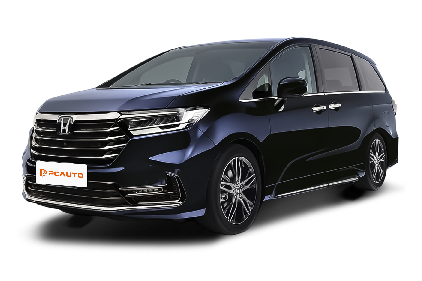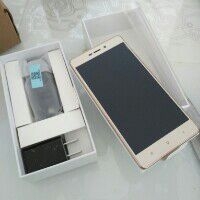Q
What's the service life of Honda Odyssey's engine?
The lifespan of Honda Odyssey's engine isn't exact length and is influenced by various factors. If it's well - maintained and properly used, it's possible for the vehicle to run 200,000 kilometers or even more. Regularly replacing the engine oil and oil filter is crucial, as engine oil can lubricate engine components and reduce wear. When the performance of the oil deteriorates after long - term use, it needs to be replaced, and changing the filter at the same time can filter out impurities. Also, pay attention to the engine's working temperature and avoid long - term high - temperature or low - temperature operation. Good driving habits are also essential. Bad habits like sudden acceleration, sudden braking, and long - term overloaded driving will accelerate engine wear. In addition, regularly checking engine components such as spark plugs and belts and promptly repairing or replacing them when problems are found also helps to extend the engine's service life.
Special Disclaimer: This content is published by users and does not represent the views or position of PCauto.
Related Q&A
Q
Is the 2018 Honda Odyssey reliable?
In 2018, the Honda Odyssey gained popularity among many family users in the Malaysian market for its reliability and practicality. This MPV is equipped with a 2.4-liter i-VTEC engine, which provides smooth power output and good fuel economy, making it suitable for long-distance driving and city commuting. Its Earth Dreams technology also enhances the overall efficiency. In terms of the transmission, it uses a CVT continuously variable transmission, which offers smooth gear shifts and has a relatively low failure rate.
The interior space is spacious. In particular, the flexible seat layout and abundant storage designs are very suitable for family use. In terms of safety, it is equipped with the Honda SENSING system, which includes active safety features such as collision mitigation braking and lane-keeping assist, thus improving driving safety. However, some owners have reported that the third-row seats are of average comfort during long trips, and due to the large body size, drivers need some time to get used to driving it on narrow roads.
Overall, the 2018 Odyssey is a worthy MPV, especially outstanding in terms of space and reliability. If you need a vehicle suitable for family outings, it can be added to your list of options. Of course, when buying a used car, it is recommended to check the maintenance records and conduct a professional inspection to ensure the vehicle is in good condition.
Q
What is the maintenance schedule for a Honda Odyssey 2018?
The 2018 Honda Odyssey in Malaysia is recommended to have regular maintenance every 6 months or every 10,000 kilometers, whichever comes first. Basic maintenance includes changing the engine oil and oil filter, checking tire pressure, the braking system, lights, and chassis components. The air filter and air - conditioning filter need to be replaced every 20,000 kilometers. It is recommended to change the brake fluid and transmission fluid every 40,000 kilometers, and at the same time, check the drive belt and spark plugs. The coolant needs to be replaced every 60,000 kilometers.
Given the hot and humid climate in Malaysia, it is advisable to shorten the replacement cycle of the air - conditioning filter to ensure the cooling effect. Additionally, it's also important to regularly check the battery status and wiper blades, as high temperatures can accelerate the aging of these components. Following the official maintenance plan can not only maintain the vehicle's performance but also extend its service life.
It should be noted that if the vehicle is often driven in congested traffic or harsh environments, you may consider advancing the maintenance interval appropriately. The specific maintenance items may vary depending on the actual usage of the vehicle. It is recommended that car owners refer to the vehicle's manual or consult the local authorized dealer for personalized advice.
Q
How often should I change the oil in my 2018 Honda Odyssey?
Regarding the oil change frequency for the 2018 Honda Odyssey, it is recommended to follow the standard of changing the oil every 5,000 to 8,000 kilometers or every six months. The specific interval depends on your driving conditions. If you often drive short distances in the hot climate of Malaysia or encounter traffic jams, it is advisable to opt for the shorter interval of 5,000 kilometers. On the other hand, if you do a lot of highway driving, you can extend the interval to 8,000 kilometers.
Honda's original recommendation is to use fully synthetic oil with a viscosity of 0W - 20 or 5W - 30. These two types of oil perform stably in high - temperature environments and can better protect the engine. It's worth noting that regular oil changes not only keep the engine running smoothly but also improve fuel economy. It is recommended to check the oil filter every time you change the oil to ensure its filtering effect.
If you are using Honda's maintenance reminder system, you can also perform maintenance according to the system's prompts. However, it should be noted that this system calculates based on normal driving conditions. If your driving environment is relatively harsh, it is recommended to perform maintenance a bit earlier.
In addition, it is also necessary to regularly check the oil level and quality. If you notice that the oil has turned black or its viscosity has decreased, you should consider changing the oil even if the maintenance period has not arrived.
Q
When to change timing belt on 2018 Honda Odyssey?
According to general maintenance guidelines for vehicles with timing belts, it is commonly recommended to replace the timing belt of the 2018 Honda Odyssey every 60,000 to 80,000 kilometers or every 3 to 5 years, whichever occurs first. The hot and humid climate in Malaysia may accelerate the aging of rubber components, so owners are advised to have the timing belt inspected more frequently under these conditions.
The timing belt is a critical engine component. Its failure can lead to piston-to-valve interference, potentially causing catastrophic engine failure and expensive repairs. In addition to the timing belt, it is highly recommended to replace related components like the water pump, tensioner, and idler pulleys concurrently. Since these parts usually can only be accessed after removing the timing belt, replacing them all at once can save subsequent labor costs.
Car owners in Malaysia should also pay attention to using original or replacement parts of equivalent quality to ensure durability and choose a repair shop with experience in servicing Honda models for the operation. Because the transverse V6 engine of the Odyssey has a relatively compact structure, professional tools and techniques are required.
If high-pitched chirping or squealing noises emanate from the engine bay, or if cracks, fraying, or missing teeth on the belt are visible, an immediate inspection is imperative. Such signs often indicate that the belt is worn.
Q
Is the 2018 Honda Odyssey 2wd or 4wd?
The 2018 Honda Odyssey available in the Malaysian market is mainly the front - wheel drive (2WD) version, and the four - wheel drive (4WD) configuration was not introduced. This model is equipped with a 2.4 - liter i - VTEC naturally aspirated engine, paired with a CVT transmission. It focuses on comfort and family practicality. Its space layout and intelligent features are well - suited for the long - distance travel needs of Malaysian families.
In Malaysia, front - wheel drive vehicles have become the mainstream choice for most MPV models because of their simple structure, lower fuel consumption, and more cost - effective maintenance. On the other hand, four - wheel drive versions are generally more suitable for regions that require higher off - road performance or face complex road conditions. However, as an urban family car, the front - wheel drive design of the Odyssey can fully meet daily use.
For consumers considering an MPV, besides the drive type, they can also pay attention to the highlights of the Odyssey, such as the Honda Sensing safety system and the flexible seat layout. At the same time, it is recommended to compare the drive configurations and functional differences with peer models like the Toyota Alphard according to actual needs to make a more appropriate choice.
Q
Is a 2018 Honda Odyssey a good car?
The 2018 Honda Odyssey is a seven - seat MPV that has performed well in the Malaysian market. It's a great fit for families. It comes with the Honda Sensing safety system, including features like adaptive cruise control and lane - keeping assist, enhancing driving safety.
The interior space is spacious. The third - row seats can be flexibly folded, offering excellent storage capacity, making it ideal for long - distance trips. However, its chassis tuning leans towards comfort, so its handling isn't as good as that of sporty models. Also, the maintenance cost is slightly higher than that of locally assembled vehicles.
If you're looking for a reliable family car, the 2018 Odyssey is worth considering. But it's recommended to check the condition of used cars and confirm the original factory warranty status before purchasing. Additionally, there's a high demand for MPVs in the Malaysian market. Similar models include the Toyota Innova and Nissan Serena. You can compare the configurations and space performance according to your budget and needs.
Q
How often should the transmission fluid be changed in a 2018 Honda Odyssey?
According to Honda's official recommendation, the transmission fluid replacement interval for the 2018 Honda Odyssey is typically every 40,000 to 60,000 kilometers or every 2 to 3 years. The specific interval depends on driving conditions. If you often drive short distances frequently in Malaysia's hot climate, tow heavy loads, or get stuck in long - term traffic jams, it is recommended to shorten the replacement interval to 40,000 kilometers to ensure the smooth operation of the transmission and extend its service life.
Transmission fluid is a crucial medium for power transmission and lubrication. After it ages, it can cause rough shifting, increased fuel consumption, and even component wear. In particular, the Earth Dreams technology transmission used in the Honda Odyssey has relatively high requirements for the cleanliness of the oil. Owners in Malaysia should also pay attention to using the ATF DW - 1 type of oil specified by the original factory and avoid mixing different specifications of products. At the same time, regularly check the color of the oil (normally it should be a clear red; if it darkens or becomes cloudy, it needs to be replaced immediately). And adjust the maintenance plan according to the "Severe Driving Conditions" clause in the maintenance manual. For example, the hot and humid Southeast Asian environment all year round may be classified as severe working conditions.
In addition, although some new - type transmissions claim to be "maintenance - free", regularly replacing the oil is still the most cost - effective way to prevent major overhauls, which is especially important for 7 - seat MPVs that are often fully loaded.
Q
Does a 2018 Honda Odyssey have a timing chain or timing belt?
In 2018, the Honda Odyssey was equipped with a timing chain rather than a timing belt. This model features a 3.5 - liter V6 i - VTEC engine. The timing system of this engine uses a chain design, which is more durable compared to a belt. Usually, it doesn't need to be replaced regularly like a timing belt. You just need to check its condition during regular maintenance.
For Malaysian car owners, the advantage of the timing chain lies in its lower maintenance cost. Especially in the hot and humid climate, the metal material of the chain is more resistant to aging than the rubber belt, making it suitable for long - term use.
However, although the timing chain has a long service life, it is still recommended that car owners follow the original manufacturer's maintenance manual and regularly check the engine oil condition. Insufficient oil lubrication may affect the chain's lifespan. In addition, if you hear abnormal metallic noises in the engine compartment, it may indicate that the chain or the tensioner needs to be inspected. Timely repairs can prevent greater damage.
Understanding the type of the timing system and the key points of maintenance can help car owners better maintain their vehicles and ensure the long - term stable operation of the engine.
Q
What is the fuel pump recall on 2018 Odyssey?
Honda Odyssey initiated a global recall due to fuel pump malfunctions. Some vehicles in the Malaysian market might also be affected. The problem stems from the possible deformation of the impeller inside the fuel pump due to manufacturing defects, which could cause the engine to suddenly stall while driving, posing a safety hazard. Subsequently, Honda Malaysia replaced the improved fuel pump assemblies for the affected vehicles free of charge through authorized dealers.
As the core component of the fuel supply system of an EFI engine, the reliability of the fuel pump directly affects driving safety. It is recommended that owners of the 2018 Odyssey continuously follow the recall announcements on the official website of Honda Malaysia or use the VIN code query tool to confirm whether their vehicles are on the list. If they notice symptoms such as weak acceleration, unstable idling, or abnormal stalling, they should immediately contact the dealer for inspection.
It's worth noting that fuel system maintenance is particularly important in Malaysia's tropical climate. Regularly replacing the fuel filter and using gasoline that meets the standards can effectively extend the lifespan of the fuel pump. If the owner has modified the fuel system or installed external devices on their own, it may affect the effectiveness of the original - factory recall service. It is advisable to inform the service center in advance to ensure the maintenance rights.
Q
Does the 2018 Honda Odyssey have all wheel drive?
The 2018 Honda Odyssey doesn't offer an all - wheel drive (AWD) version in the Malaysian market. This model is only equipped with a front - wheel drive (FWD) system. This design mainly focuses on fuel economy and ride comfort for city driving, making it suitable for daily use by family users.
An all - wheel drive system is generally more suitable for areas that need to deal with complex road conditions or adverse weather. However, the climate and road conditions in Malaysia are relatively stable, and front - wheel drive can meet most needs. If you have a particular preference for all - wheel drive, you can consider other brands or models. But note that all - wheel drive may increase the purchase cost and fuel consumption.
The advantages of the Honda Odyssey lie in its spacious interior, flexible seat layout, and reliable power performance. These features make it one of the popular choices for family cars in Malaysia.
Popular Cars
Model Year
Car Compare
Car Photo
Latest Q&A
Q
Does the 2019 Golf GTI have a timing belt or chain?
The 2019 Golf GTI uses a timing chain instead of a timing belt—a design that offers better durability and lower maintenance costs. Typically, a chain lasts as long as the engine itself and rarely needs replacement, whereas a belt requires inspection or replacement every 60,000 to 100,000 km. If neglected, a worn belt can snap and cause severe engine damage.
VW’s EA888 engine family has long relied on chain-driven systems, which are relatively quiet and highly reliable. That said, it’s crucial to periodically check the tensioner’s condition. Some earlier models experienced timing issues due to tensioner design flaws, but this was addressed in the 2019 version.
For performance enthusiasts, a chain system handles high-revving stress better, making it a common choice for hot hatches like the GTI. For daily driving, just stick to VW 50400/50700-spec oil as recommended in the manual—proper lubrication keeps the chain system healthy long-term.
One heads-up: If you hear noticeable metallic rattling near the front of the engine, have the guides or tensioner inspected ASAP. Unlike the telltale belt squeal before failure, this noise is a classic sign of chain-related wear.
Q
What is the recall on the 2019 GTI?
The 2019 Volkswagen Golf GTI was subject to a safety recall addressing two potential issues. First, the fuel pump control unit software could malfunction, potentially causing engine stalling in rare cases. Second, some vehicles might have rear suspension stabilizer link bolts that weren't tightened to specification, posing a loosening risk. Owners can visit authorized dealers for free software updates or bolt retightening.
These proactive recalls demonstrate Volkswagen's commitment to safety. Dealers often handle outstanding recall items during routine maintenance.
For performance-oriented models like the GTI, it's wise to go beyond recall checks. Pay close attention to the turbo system, DSG transmission fluid, and brake wear—these components endure more stress during spirited driving. If warning lights appear or you notice unusual noises, get a professional inspection promptly. Keeping the car in top shape ensures you can fully enjoy its dynamic capabilities.
Q
Does the 2019 GTI require premium gas?
The 2019 GTI does recommend using high-octane fuel (typically RON 95 or above). Its 2.0L turbocharged engine has a relatively high compression ratio, and premium gas ensures optimal performance while reducing knock risk. It also helps maintain engine cleanliness and long-term reliability.
While the car may tolerate lower-octane fuel (like RON 92), you’d see slightly reduced power output and fuel efficiency. Over time, it could also affect engine longevity. Turbocharged engines are particularly sensitive to octane ratings since turbos generate higher heat and pressure—high-octane fuel handles these conditions better.
Mixing different fuel grades occasionally won’t hurt, but sticking to the manufacturer’s recommendation is ideal. Also, periodic fuel additive treatments can help clean carbon buildup, especially for direct-injection engines.
One more thing: even with the same octane rating, fuel additive packages vary by brand. So, picking a reputable gas station matters too.
Q
How long will a 2019 GTI last?
The lifespan of a 2019 GTI largely depends on maintenance and driving habits. With regular oil changes, transmission fluid replacements, and avoiding aggressive driving, it can easily clock over 200,000 kilometers—or even more. Its 2.0T engine and DSG gearbox are proven combos, and as long as you stick to the factory service schedule, mechanical reliability won’t be an issue.
Just keep in mind: turbocharged engines demand extra care. Always use the right spec full-synthetic oil and monitor the cooling system. Climate plays a role too—hot, humid conditions mean paying extra attention to rubber seals and electronics. Every 50,000 km, have the timing chain and high-pressure fuel pump inspected (key items for turbos).
Driving style matters. Don’t redline it constantly, and let the engine warm up properly after cold starts. Rustproofing helps long-term durability, so regular underbody washes are smart. Nail these details, and this car’s built to last.
Q
How fast is the 2019 GTI?
The 2019 GTI truly delivers when it comes to performance. Under the hood lies a punchy 2.0-liter turbocharged four-cylinder, churning out 228 horsepower and 350 Nm of torque. Whether you opt for the engaging 6-speed manual or the lightning-fast 7-speed DSG, this hot hatch rockets from 0-100 km/h in just 6.3 seconds, with an electronically limited top speed of 250 km/h.
What really sets the GTI apart is its razor-sharp handling. The sport-tuned suspension and electronic differential lock work together to deliver precise steering and rock-solid cornering stability. It’s the perfect blend of everyday practicality and proper driver’s car thrills—a well-rounded hot hatch in every sense.
For enthusiasts, the GTI’s tuning potential is massive. Many owners go for ECU remaps or intake/exhaust upgrades to squeeze out even more power. Just remember to keep things street-legal—safety and compliance should always come first. Around here, these pocket rockets have a solid following, and it’s easy to see why.
View MoreRelated News

Honda Prelude priced as high as $42,000, which makes me nostalgic for the old Prelude
JamesNov 20, 2025

Honda expects the S2000 to make a comeback, but it is too unique to be revived.
WilliamNov 19, 2025

Choose Honda HR-V or Mitsubishi XPANDER for a family car?
WilliamNov 12, 2025

Which one is better, Honda City or Toyota Vios?
AshleyNov 11, 2025

Jaecoo J7 VS Honda CR-V, which is the most worthwhile C-Segment SUV to buy
JamesNov 7, 2025
View More













 Cars
Cars




Pros
Cons